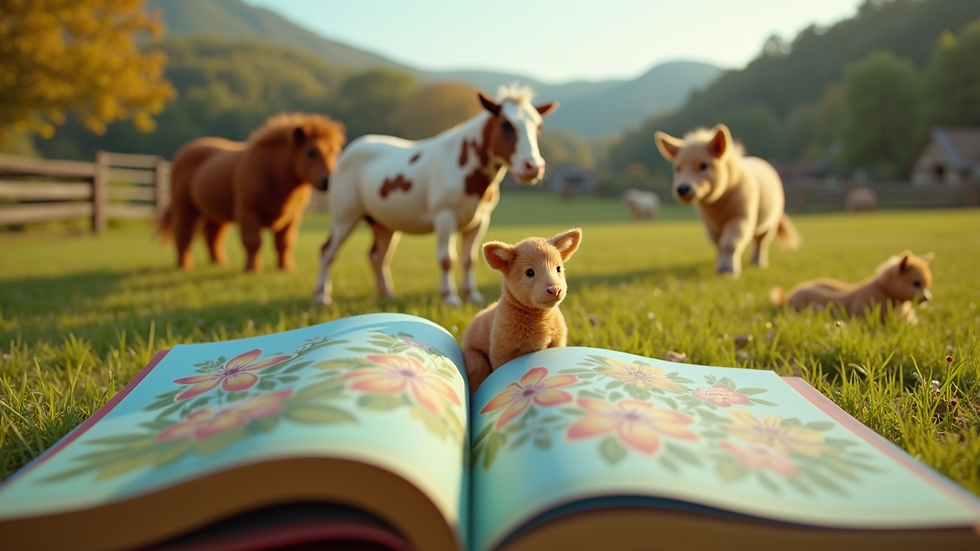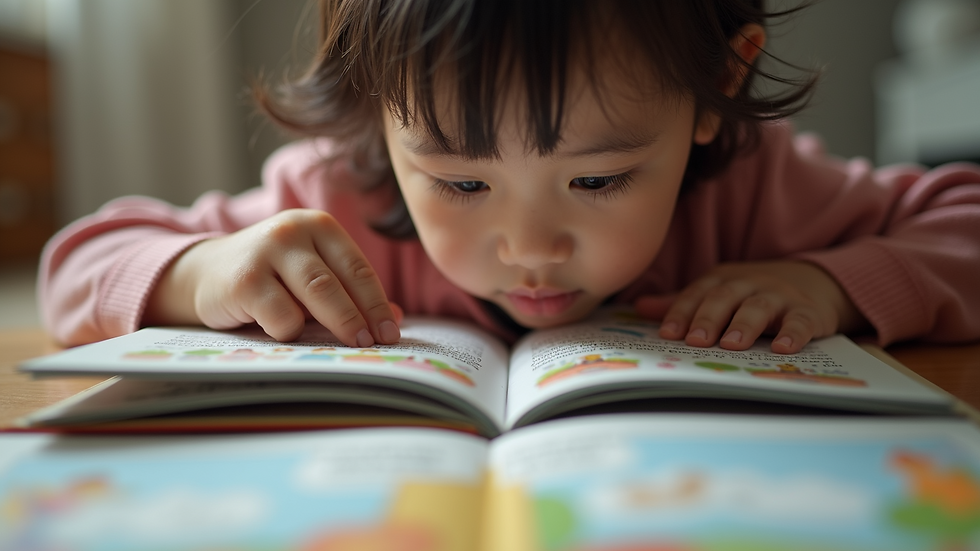
Bilingual Children’s Books Inspired by Spanish Ranch Animals
- rancholeandra1
- Jul 18
- 3 min read
Updated: Jul 20
In a world that is becoming increasingly interconnected, the importance of bilingual education cannot be overstated. For children, learning a second language can open doors to new cultures, ideas, and friendships. One delightful way to introduce young readers to a second language is through bilingual children's books. This blog post will explore the enchanting world of bilingual children's books inspired by Spanish ranch animals.
These books not only teach language skills but also immerse children in the vibrant culture of Spanish-speaking countries. Imagine your child learning about a caballo (horse) or a vaca (cow) while enjoying a beautifully illustrated story. This combination of language and culture makes reading an exciting adventure.
The Magic of Bilingual Books
Bilingual books are designed to present text in two languages side by side. This format allows children to see the connection between words in their native language and the new language they are learning.
Benefits of Bilingual Reading
Language Development: Children exposed to two languages from an early age often develop better language skills overall. They learn to think in both languages, which enhances their cognitive abilities.
Cultural Awareness: Bilingual books often include cultural elements that help children understand and appreciate different traditions and lifestyles.
Engagement: Colorful illustrations and engaging stories capture children's attention, making learning fun.
Why Ranch Animals?
Ranch animals are a familiar and relatable theme for many children. They evoke images of wide-open spaces, playful interactions, and the beauty of nature.
Familiarity: Many children have seen or interacted with ranch animals, making the stories more relatable.
Fun Characters: Animals like gallinas (chickens), ovejas (sheep), and perros (dogs) can be portrayed with unique personalities, making the stories entertaining.
Learning Opportunities: Each animal can introduce new vocabulary and phrases, enhancing language learning in a fun way.
Tips for Reading Bilingual Books with Your Child
Reading bilingual books can be a rewarding experience for both parents and children. Here are some tips to make the most of your reading time:
1. Take Turns Reading
Encourage your child to read one page in English and the next in Spanish. This practice helps them connect the two languages.
2. Discuss the Illustrations
Ask your child questions about the pictures. This encourages them to think critically and express their thoughts in both languages.
3. Use Props
If possible, use toys or props related to the story. For example, if the book features a caballo, have a toy horse on hand to make the story come alive.
4. Repeat Key Phrases
Repetition is key in language learning. Encourage your child to repeat important phrases after you. This reinforces their understanding and pronunciation.
5. Make It Fun
Incorporate games or activities related to the story. For example, after reading about a gallina, you could have a fun chicken dance party.
The Role of Parents in Bilingual Education
Parents play a crucial role in their child's bilingual education. Here are some ways you can support your child's language learning journey:
1. Be a Role Model
Show enthusiasm for learning languages. Your positive attitude will inspire your child to embrace their bilingual journey.
2. Create a Language-rich Environment
Surround your child with books, music, and media in both languages. This exposure will help them become more comfortable with both languages.
3. Encourage Conversations
Engage your child in conversations in both languages. This practice will help them develop their speaking and listening skills.
4. Celebrate Progress
Celebrate your child's achievements, no matter how small. Positive reinforcement will motivate them to continue learning.
5. Connect with the Community
Look for local events or groups that focus on bilingual education. Connecting with other families can provide support and resources.
The Joy of Bilingual Storytelling
Bilingual storytelling is a beautiful way to connect with your child while fostering a love for languages.
Shared Experience: Reading together creates a bond between parent and child.
Cultural Exchange: Through stories, children learn about different cultures and perspectives.
Lifelong Skills: Bilingualism is a valuable skill that can benefit children throughout their lives.
Final Thoughts
Bilingual children's books inspired by Spanish ranch animals offer a wonderful opportunity for young readers to explore language and culture.
By incorporating these books into your child's reading routine, you can help them develop language skills while enjoying delightful stories.
As you embark on this bilingual journey, remember to have fun and celebrate the learning process. The world of ranch animals awaits, filled with adventure, laughter, and endless possibilities.



Comments